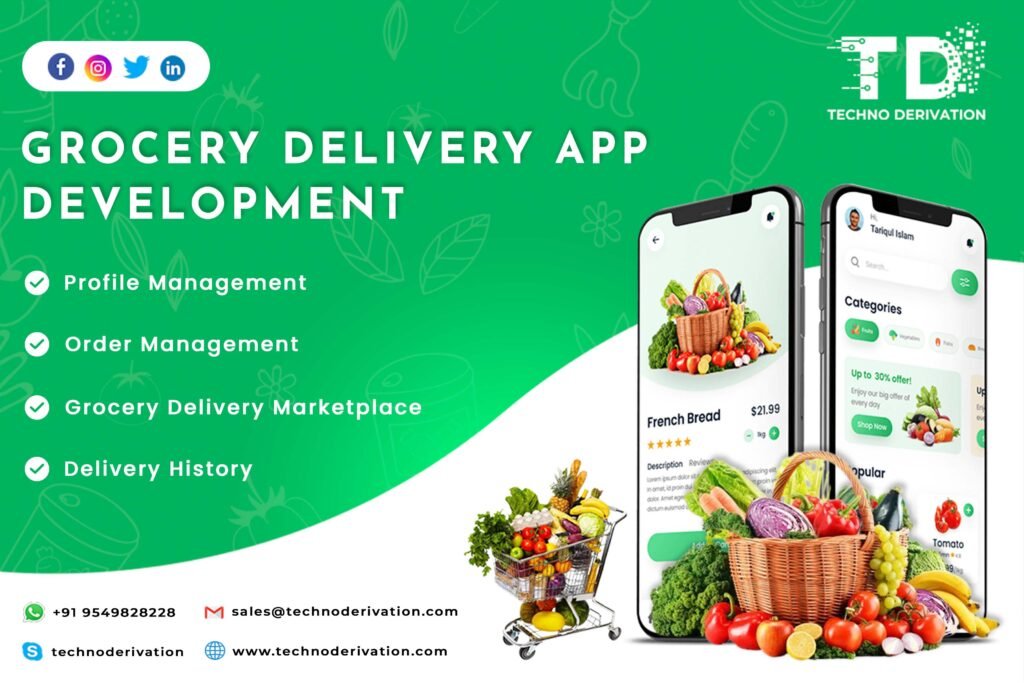The grocery delivery app market has surged in recent years, reshaping the way consumers purchase their daily essentials. This transformation is driven by technological advancements, changing consumer behaviors, and the need for convenience. This article explores the evolution, benefits, challenges, and future prospects of grocery delivery apps.
Evolution of Grocery Delivery Apps
The concept of grocery delivery isn’t new, but its digital transformation has been remarkable. Early services were limited to phone orders and local deliveries. However, the advent of smartphones and the proliferation of high-speed internet catalyzed the growth of dedicated grocery delivery apps. Companies like Instacart, Amazon Fresh, and Walmart Grocery pioneered this space, providing users with the ability to order groceries from their devices and have them delivered within hours.
Key Features and Benefits
- Convenience: The primary allure of grocery delivery apps is convenience. Consumers can shop from the comfort of their homes, avoiding long lines and crowded stores. This is particularly beneficial for the elderly, busy professionals, and individuals with mobility issues.
- Time-Saving: With features like search functions, saved shopping lists, and personalized recommendations, these apps significantly reduce the time spent on grocery shopping.
- Wide Selection: Grocery apps often partner with multiple retailers, providing a broader selection of products than a single physical store. This allows consumers to compare prices and find unique items.
- Contactless Delivery: The COVID-19 pandemic heightened the need for contactless services. Grocery delivery apps adapted quickly, offering no-contact delivery options to ensure safety and peace of mind.
- Promotions and Discounts: Many apps offer exclusive deals and discounts, which can lead to significant savings. Loyalty programs and subscription services further enhance the value proposition.
Challenges Faced by Grocery Delivery Apps
- Logistics and Supply Chain Management: Ensuring timely delivery while maintaining the quality of perishable items is a complex challenge. Companies must invest in robust logistics and supply chain systems to meet customer expectations.
- High Operational Costs: The cost of last-mile delivery, warehousing, and technology infrastructure can be substantial. Balancing these costs while keeping prices competitive is crucial for sustainability.
- Customer Trust and Satisfaction: Building and maintaining trust is essential. Issues like incorrect orders, delayed deliveries, and damaged goods can erode consumer confidence.
- Competition: The market is highly competitive, with numerous players vying for market share. Companies must continuously innovate and improve their services to stay ahead.
The Future of Grocery Delivery Apps
The future of grocery delivery apps looks promising, with several trends shaping the industry:
- Artificial Intelligence and Machine Learning: AI and ML will play a pivotal role in enhancing user experience through personalized recommendations, predictive inventory management, and efficient route planning for deliveries.
- Sustainability: As consumers become more eco-conscious, grocery apps will need to adopt sustainable practices, such as eco-friendly packaging and optimizing delivery routes to reduce carbon footprints.
- Integration with Smart Home Devices: Integration with smart home devices, like voice assistants, will streamline the shopping process, allowing users to add items to their cart through simple voice commands.
- Expansion into New Markets: Emerging markets present a significant growth opportunity. Companies that can adapt their models to suit local needs and preferences will likely thrive.
- Enhanced Delivery Options: Innovations like drone deliveries and autonomous vehicles could revolutionize the logistics of grocery delivery, making it faster and more efficient.
Conclusion
Grocery delivery apps have revolutionized the retail landscape, offering unparalleled convenience and transforming consumer habits. While the industry faces challenges, continuous innovation and adaptation will drive its growth. As technology advances and consumer expectations evolve, grocery delivery apps will undoubtedly become an integral part of our daily lives, making grocery shopping a seamless and enjoyable experience.


